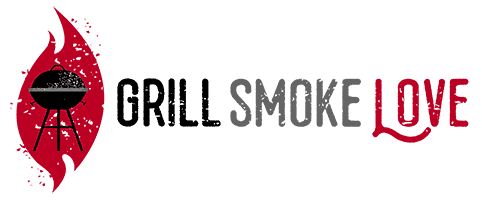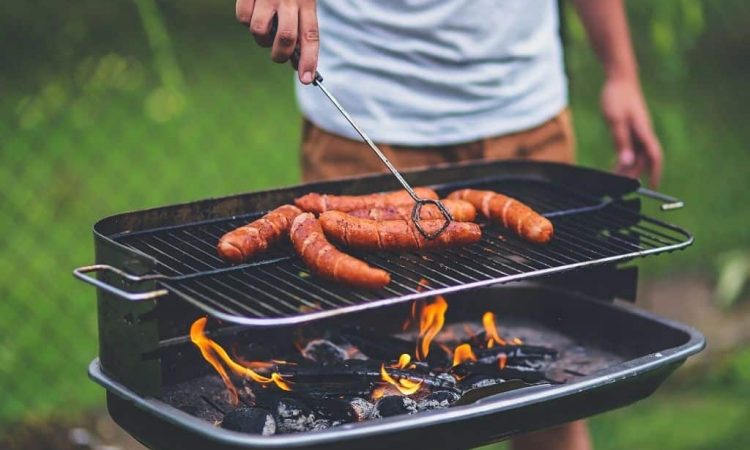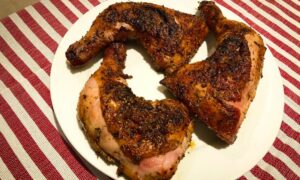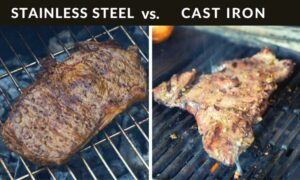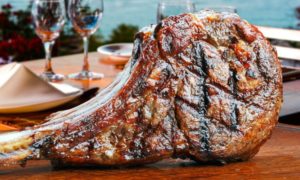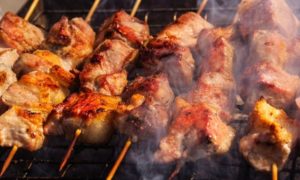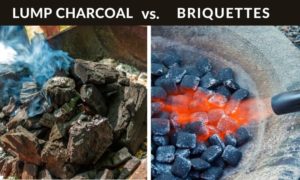At some point, clever marketing got in the way of common sense when it comes to charcoal grilling. Charcoal is notoriously hard to light, so, using the magic of modern science, lighter fluid was invented and sold to the masses.
But like Twinkies or TV dinners, what is convenient isn’t always the best option.
In this guide, I will explain why you shouldn’t use lighter fluid. I will also give you 5 convenient methods to light up your charcoal without sweating too much.
Why Avoid Lighter Fluid?
No one wants a burger that tastes like lighter fluid, but many people still use the stuff because they believe charcoals need it to light. The truth is, there are many ways to get a charcoal fire roaring without resorting to lighter fluid.
Lighter fluid should be the last resort. It’s a petroleum product, similar to kerosene, and its vapors and chemicals do not break down easily.
Before the vapors have burned off, the chemicals soak into your briquettes or hardwoods, and that funk just won’t go away. No matter what you do, some of those chemicals wind up in your food.
In addition, it’s not uncommon to use a bit too much of the fluid which results in a flare-up that might burn your face and eybrows.
The downsides are obvious, and once you taste food made over high-quality coals with no lighter fluid, you’re likely never to go back. If you’re putting time and money into getting the best tasting food off of your charcoal grill, the lighter fluid has got to be the first thing to go.
How to Start Charcoal Without Lighter Fluid
Skipping the lighter fluid is not a big deal. There are several ways to avoid it altogether, each with its own pluses and minuses.
Read also: Lump Charcoal vs. Briquettes
Method 1: Chimney Starter
The easiest way to get your charcoal fired up every time is with a simple chimney starter.
The chimney is a metal can with a shelf in it. You stack your coals in the top, and under the shelf, you start a fire with some paper. If you drizzle a little oil on the paper, the fire will burn longer.
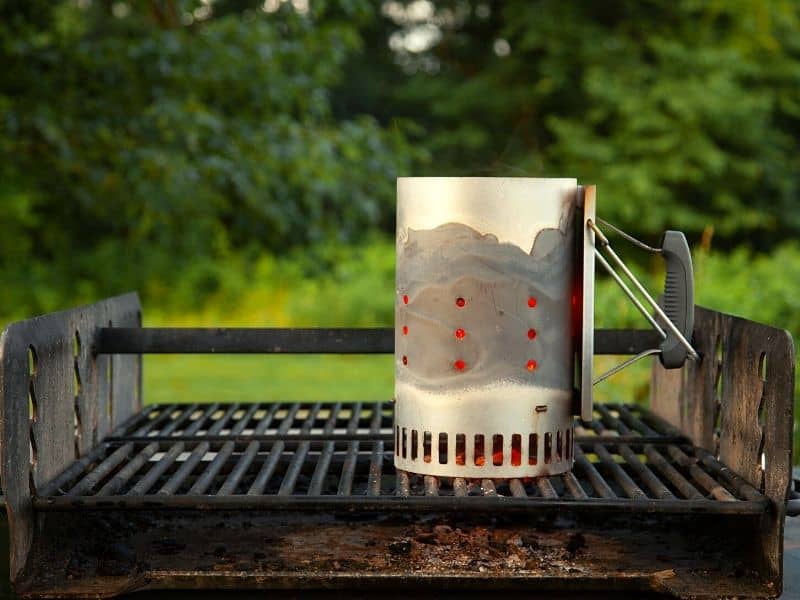
The can has vents in it, and since it’s a small space, the fire begins to burn quickly. Once you’ve got the charcoal lit, you spread them out on your grill and start cooking.
Supplies
- Chimney starter
- Paper and oil, or wax fire starters
- Grill lighter or matches
- Heavy oven mitts or pot holders
- Grill tongs
How To Use a Chimney Starter
- Get your grill ready for cooking by cleaning everything out. Remove the cooking grate and set it aside.
- Place the chimney on the coal grate and fill the top with your normal amount of lump charcoal or briquettes. Chimney sizes vary, but generally, it will be about three-quarters full.
- Under the chimney, place your fire starter. Use a large sheet of newspaper, wadded up and drizzled with cooking oil. Alternatively, you could use a commercially available wax fire starter.
- With the chimney sitting level, light the newspaper or fire starter.
- Let the fire grow until the charcoal is well-lit and the surface turns grey. It usually takes 10 to 15 minutes.
- The chimney is going to be hot. Using great care and a thick oven mitt, grab the chimney by the handle and pour the coals into the grill. Use your tongs to distribute the pile as you desire.
- Be sure to place the chimney, which is still scorching hot, somewhere no one will accidentally touch it and somewhere it cannot ignite combustible substances, like dry grass or your house.
Pros:
- Reliable coal starting at minimum cost
- No nasty chemicals
- Safer than handling lighter fluid
- For the experienced griller, the chimney provides the exact measurement of charcoal they need
- With a small grate, you can sear foods right on the chimney – it’s the hottest grill you’ll ever find
Cons:
- Handling hot chimney can be dangerous
Method 2: Electric Charcoal Starter
Also known as charcoal iron, these devices are electric heating elements mounted on a handle.
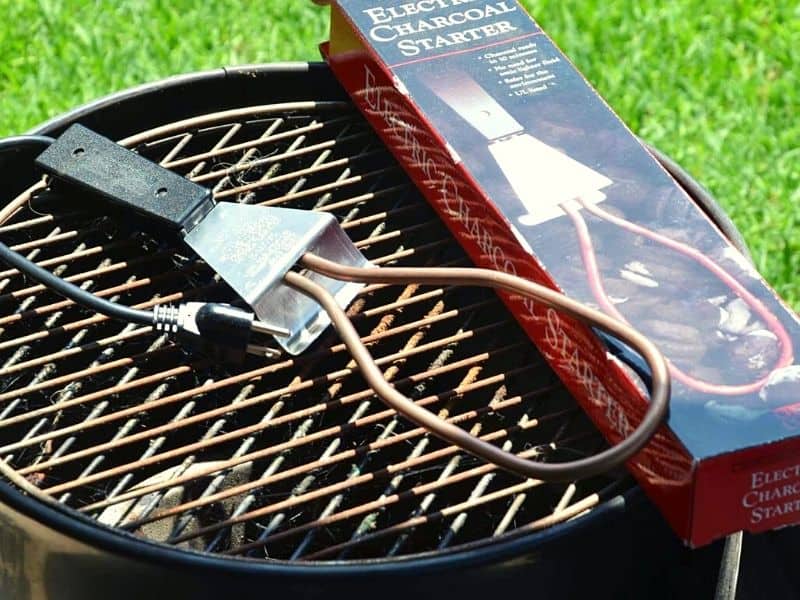
Supplies
- Electric charcoal starter
- Nearby electrical outlet or extension cord
How To Use an Electric Charcoal Starter
- Put half as much charcoal in your grill as you need for cooking.
- Lay the charcoal starter on the pile of coals. Cover the heating element with the remainder of your charcoal load.
- Plug in the starter and let it start heating the coals. Leave it plugged in until you see your coal pile begin to develop white ash.
- Unplug the starter and carefully remove it from the charcoal pile. It’s probably very hot!
Pros:
- Fast and easy starting with little fuss
- No nasty chemicals
Cons:
- Needs electricity
- Iron remains dangerously hot after you remove it from the grill
Method 3: Heat Gun/Looft Lighter
This style of coal starter looks like a cross between a futuristic hair curler and Luke’s lightsaber. Looft Lighter is a famous brand name to look for. You plug it into an outlet, and then hot air and flames begin shooting out.
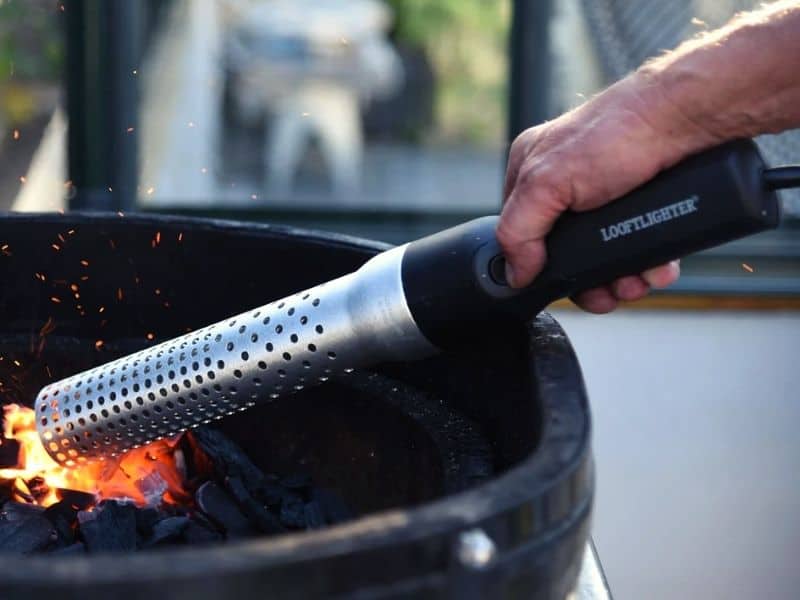
Hold it near a pile of charcoal, and the coals will ignite and begin burning in a minute or so. If you don’t have a wall outlet handy, you can purchase starters that use rechargeable batteries.
Supplies
- Heat gun-style charcoal lighter
How To Use a Heat Gun Charcoal Starter
- Load your grill with charcoal as you would for cooking.
- Plug in the starter. Hold the end to the coals you want to light first, then press the button to ignite.
- When smoke and sparks appear, pull the starter away a little to begin igniting a larger area.
- Once the charcoal is ignited, put the starter away and start cooking
Pros:
- Control exactly which coals you want to light: Great for smokers or slow-burn charcoal racks
- Easy to use, fast fire starting, no other supplies required
- Most have an automatic shut-down feature that will activate if they get too hot
- Can be used with fireplaces, wood stoves, campfires, or bon fires too
Cons:
- Unsafe to use on rainy days
- Loud
Method 4: Butane Gas Torch
Using a butane torch is a fast and convenient way of lighting charcoal. In addition, it only costs a few bucks and butane cylinder are available in almost any gas station or store.

Supplies
- Butane torch attachment
- Butane gas canister
How To Use a Butane Torch
- Arrange the charcoal to a pile on your grill.
- Open the gas a bit and press the ignition trigger so that you have a small flame coming out of the torch.
- You can open the gas a bit more to adjust the flame and then point in lower part of the pile in the middle.
- After about one minute you should have some of the charcoal embering nicely. You can then either keep on lighting more charcoal with the torch or just wait for the ember to spread.
- When all charcoals are embering you arrange them evenly and start grilling.
Pros:
- Fast and convenient
- No need for electricity
- Affordable
Cons:
- Can be dangerous — especially if it’s windy
Method 5: Newspaper and Vegetable Oil/Wax
It’s entirely possible to get charcoals burning without any fancy equipment or gadgetry. All it takes is patience, some practice, and saying a few of the right prayers.
The key to getting a coal fire burning is to keep a small fire burning under it long enough to heat the coals sufficiently. You can’t just ignite regular charcoal with matches or a lighter. Charcoal is harder to start than a wood fire since it must burn at a higher temperature.
One old trick is to use sheets of wadded-up newspaper. These burn well but too quickly. You can slow their burn by adding a little bit of vegetable oil to them.
Parrafin wax is another option. Many chefs make starters with small wads of newspaper dipped in candle wax. Similar products are also available at your local big-box retailer near the charcoal and campfire supplies.
Supplies
- Newspaper or the charcoal bag
- Cooking oil or wax
- Grill lighter or matches
How To Use a Newspaper and Vegetable Oil/Wax
- Start by cleaning the lower vents of your grill. Proper airflow is essential.
- Wad up several sheets of newspaper into loose balls. Drizzle with vegetable oil.
- Place the balls on the coal grate of your grill, touching one another. Tip: If you have access to some dry sticks or kindling, place it on top of the newspaper. Anything you can use to keep the fire burning longer will help you out.
- Add a few chunks of charcoal atop the newspaper balls. Make sure to leave enough gaps so that air can reach the newspaper. You need air to flow in to let the newspaper burn, and the hot air and flames should then go up and over the coals.
- As the coals begin igniting, use your grill tongs to add more charcoal. Keep building the fire, being careful not to move hot coals away too soon. Keep making a bigger and bigger pile until you’ve got enough charcoal burning to cook with.
- Once the coals are hot and you’ve got enough of them, arrange them in the grill for cooking, place your cooking grate on the grill and begin grilling.
Pros and Cons
- Only requires things you probably already have on-hand
Cons:
- Fickle results – may take several attempts
- Takes more time and effort than the other methods
Method 6: Easy-Starting Briquettes
Makers of charcoal briquettes want to make your life easy, so they often offer “match-light” or “easy-starting” briquettes. These have been pre-soaked in lighter fluid, so they start burning quickly and easily.
If your goal is to avoid lighter fluid, then these probably aren’t for you. Some products have paper bags that can be used for lighting the fire, which is nifty if you’re traveling and using park grills. Either way, your best bet is to follow the instructions on the bag for whichever product you’ve purchased.
Supplies
- Firestarting briquettes
- Grill lighter or matches
- Grill tongs
How To Use Firestarter Briquettes
- Depending on the briquettes, you might take them out of the bag or you might not. Read the directions carefully.
- Place the briquettes on the grill, and light one edge with your lighter.
- As the fire grows, use your grill tongs to distribute them around the cooking area.
Pros
- Very easy to use, especially when traveling, since minimum supplies are needed
Cons:
- Briquettes may contain chemicals, just like lighter fluid does – some actually have lighter fluid in them
Charcoal Starting FAQ
Can I use gasoline instead of lighter fluid?
There are a million and one reasons why using gasoline to light your charcoal is a terrible idea. The first and foremost is that it is extremely dangerous. Gasoline vapors aren’t just flammable – they’re explosive. Keep gas far away from all grilling operations. If you survive until your dinner, your food will likely taste as if you picked it up off the ground at the gas station.
Can I use alcohol (e.g. vodka or whisky) to light charcoal?
Some people use alcohol to start their charcoal by soaking paper towels in it and burning them. High-proof alcohol burns, but it burns very quickly. Be very careful as it will flare up quickly. With all this in mind, it’s easier to use the newspaper and oil method described above.
Should I close the grill lid when lighting charcoal?
For initial lighting, no. The more oxygen you can make available during the first part of the ignition process, the better. Once the coals begin to heat up, you can close the grill lid and fully open the vents. As the fire gets hotter, you can slowly close the vents to control airflow and adjust the temperature on the grill.
How long should coals burn before cooking?
There’s no good rule of thumb because grills and outdoor temperatures vary so much. The surface of the coals should be light gray, not black, for the most part before putting food on your grill. You also want the grate and grill to be properly heated before starting to cook, so a grill thermometer is your best friend. Preheat to the 500-degree range, then maneuver your coals for direct or indirect cooking as desired.
Lighting Charcoal Without Lightern Fluid – Final Thoughts
Lighter fluid is never required for starting your grill – there are many better ways to get the fire raging.
A chimney starter is inexpensive and will last forever, and it is by far the most popular option for easily lighting charcoal. There are also many other methods to light your charcoal conveniently.
No matter how you light the charcoal, I hope that you enjoy your barbecue!
